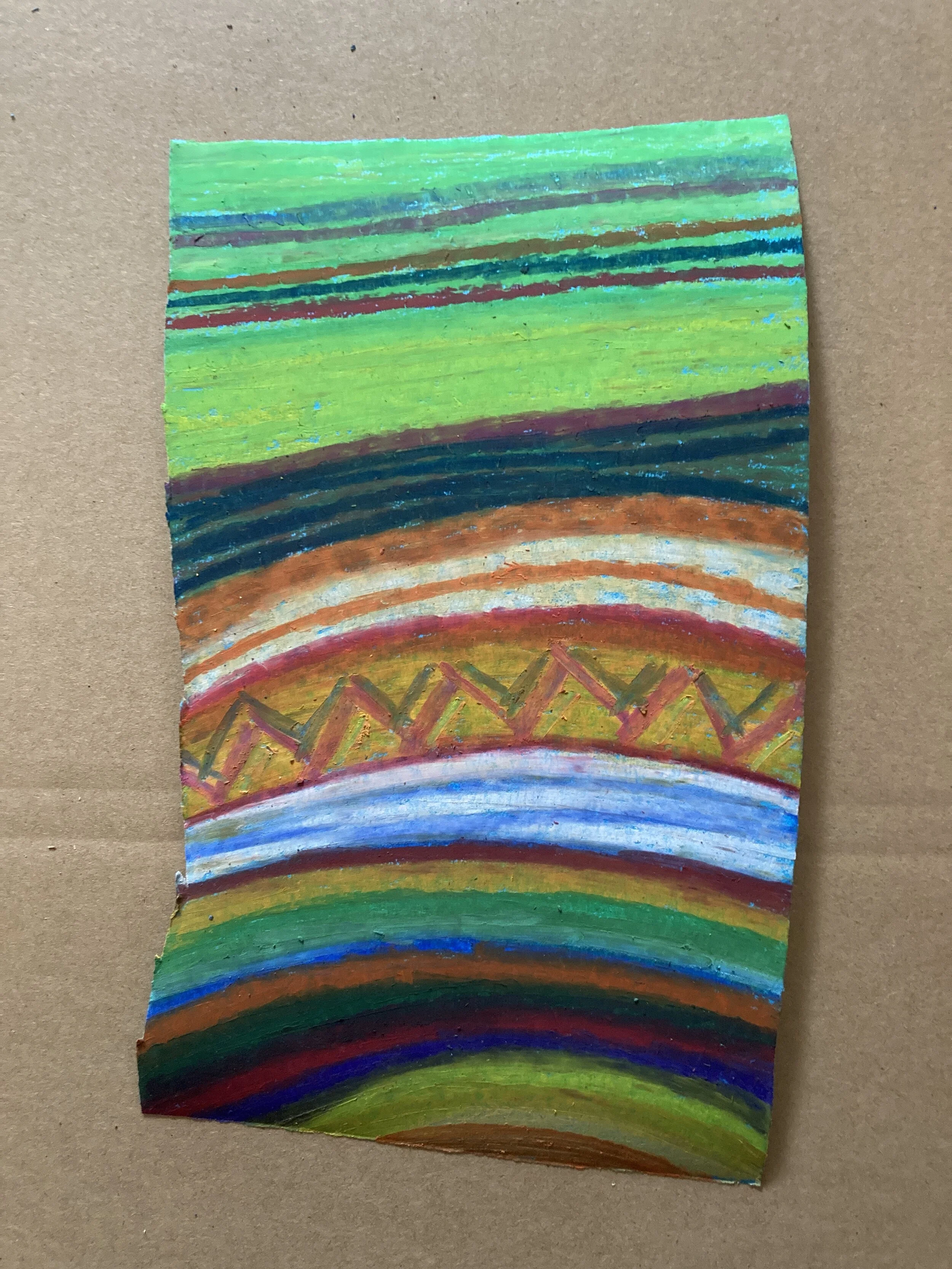Sketching patterns
The 16th Century, Saint Helena printed map composition has precise descriptive mark making creating an illusion of perspective, explore the map enough and you’ll find people, rocks, forests, information designed to enable identifiable navigation of the geography. Originally printed upon a type of parchment, my interaction is confined to a digitized image, using the navigation tools available via the institutional finding aid. Despite being so removed from the original record, I still have access to the original information.
There is a question of interacting with the physicality of the records. My observational drawing is normally constructed, formed within a place / location. Benefiting from multiple perspectives, adapting to major / discreet changes to a scene whether an individual moves or clouds block the sunlight. My physical interaction though is with a static computer screen.
The observational drawing is therefore of data, computer code that is recreating the original image transmitted by the library on my computer screen. It’s flat, precise, limited to the dimensions of the technology I have. The temptation is simply to replicate what I see (as per normal observational drawing) but again that conflict with my studio practice emerges, I want to draw freely.
Researching the artist papers pertaining to Emmy Lou Packard, her drawings use marks in a pattern form to create a composition. Drawing from a computer screen doesn’t have to be precise, taking quick glances at the map, I started making bold harsh marks using oil pastels. Deliberately forcing me to shape a composition within the marks. As a rule, in my drawing, I never use an eraser – if a mark made is incorrect or not precise, the challenge is to use that mark within the drawing.








